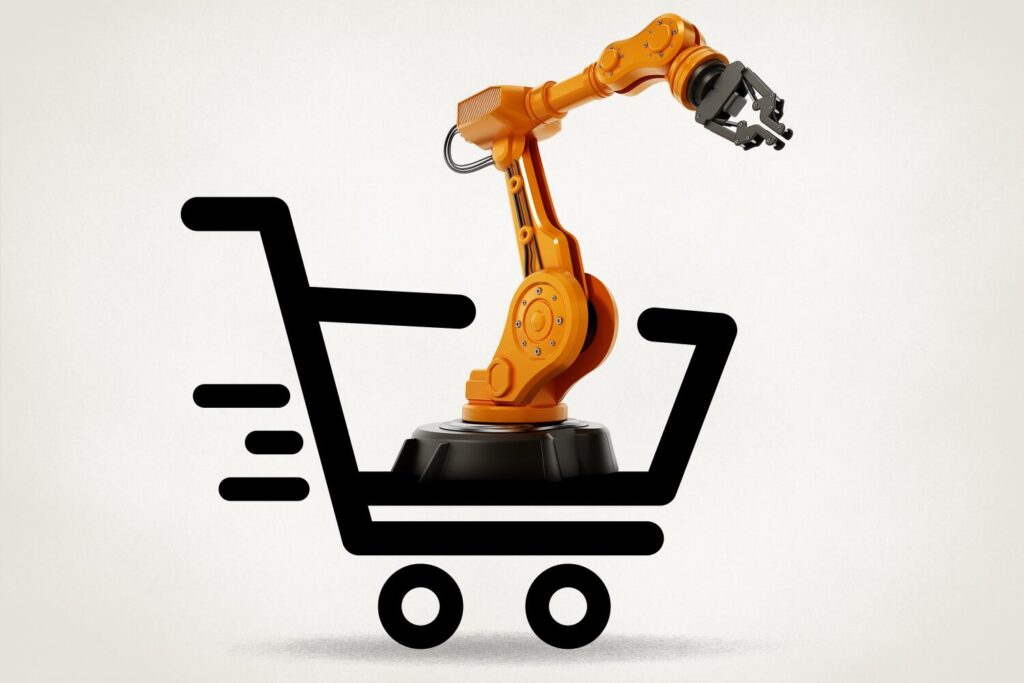Carolyn Bennett remembers flipping through a yellow telephone book in the 1980s to find carpet stores and workers who refinished wood to help renovate her home.
Today, the 67-year-old uses a chatbot to help her shop. Bennett has turned to ChatGPT, which she refers to as “Chat,” to find vendors for a kitchen renovation project, compare heat pumps and weigh in on whether she should buy a convection oven.
The San Francisco resident could have browsed websites on Google, but she prefers using ChatGPT to save time.
“Any product that has multiple features that you want to compare across different products, I think it’s super helpful,” she said.
The rising popularity of artificial intelligence-powered chatbots that can generate text and images is already changing the way people brainstorm ideas, write and research. Tech companies and payment services are also betting that AI will transform how people shop. They’re even experimenting with AI agents that can place orders on a customer’s behalf with their permission.
Google, Amazon and other major tech platforms envision a future where online shopping becomes even more personalized and proactive. But companies will also have to convince consumers to buy into the idea, ensuring them that they’re protecting their privacy and providing accurate results.
AI chatbots have spewed out incorrect or nonsensical information before. And shoppers might be reluctant to give control to AI agents, especially when it comes to handing them their credit card, some retail experts said.
“There’s a lot of concern about the reliability of these kinds of tools,” said Rachel Wolff, a retail and ecommerce analyst at eMarketer. “So you might not want to trust these agents fully to make decisions on your behalf.”
For now, AI shopping experiences are growing. Last month, OpenAI said it’s experimenting with new shopping features, including a way to see images and prices of several products along with links for people to buy the items.
Perplexity, which introduced a new feature last year that allows subscribers to buy items through its chatbot, also teamed up with Visa to help improve its shopping experience in the future.
“Visa knows a lot about its customers, and if customers opt in, there can be that anonymized data sharing, so that the recommendations you get in Perplexity are in line with your kind of purchase and transaction history so you can get better quality answers,” said Dmitry Shevelenko, Perplexity’s chief business officer.
(The Los Angeles Times partners with Perplexity to generate summaries of ideas expressed in opinion pieces.)
These efforts are still early, but AI companies are also trying to differentiate themselves from rivals such as Amazon and Google that also have chatbots and AI shopping features. Both Perplexity and OpenAI note the products shown within their chatbots are not ads. The chatbots cite websites that review and rate mattresses, coffee makers and other products.
Google also is stepping up its AI shopping features as it competes with OpenAI. Last week, the search giant said in the coming months people will be able to use AI mode, a tool where people can ask questions and get answers like they would to a chatbot, to find and compare products. The tool is powered by Google’s AI model Gemini.
Vidhya Srinivasan, who leads the Ads and Commerce teams at Google, said Monday in a press briefing before Google’s annual I/O developers conference that the company displays search results in AI mode based on what’s most relevant to questions people are asking.
Some of the results also highlighted reviews from websites, but Google has more than 50 billion product listings and that information gets refreshed.
“We’re doing even more personalization in this mode, where we get to personalize based on brands and styles,” Srinivasan said.
The Mountain View-based company is exploring and experimenting with ads in their AI shopping experiences. Google unveiled other AI shopping tools, including a way to try out clothes virtually and buy products when the price falls.
Visa executives say they envision a future in which AI agents will book plane tickets, hotel rooms and other services and products on behalf of the customer with their approval.
Rajat Taneja, president of technology for Visa, said that people will be able to set limits around what an AI agent could purchase like when someone hands over their credit card to a friend, family member or assistant, to help them shop.
The San Francisco-based payment company, partnering with such AI companies as OpenAI, Perplexity and Anthropic, unveiled a new initiative in late April to enable AI agents to shop and buy products for people but that work is still being tested.
Product recommendations, he said, will only get more personalized in the future.
“They’re going to be different ways in which this will manifest itself, much like the analogy of the internet has evolved in so many different ways,” Taneja said. “The most important thing is we are all unique, in our likes, in our dislikes, in what we gravitate towards and what we buy.”
Consumers are already using generative AI for shopping, research shows. Adobe Analytics, which surveyed 5,000 U.S. consumers, said that 39% reported using generative AI for online shopping and 53% planned to do so this year. Shoppers used generative AI for research, product recommendations, deals and other shopping tasks, according to the survey.
Capgemini Research Institute, which surveyed 12,000 adult consumers across 12 countries, found that 24% of consumers used generative AI in shopping experiences. The use was higher among Gen Z and millennials compared to Gen X and boomers. But the survey also found that consumer satisfaction with generative AI also fell.
Elliot Padfield, a 21-year-old growth marketing consultant in San Francisco, uses AI for other tasks but he says the shopping experience has fallen short. As a result, he doesn’t always trust a chatbot’s recommendations.
When he tried out shopping on Perplexity for the first time, his order never arrived but he was able to get a refund.
And while chatbots can provide a comparison of four types of wireless headphones, for example, he wants more information about how the recommendations fit his needs and priorities.
“I still have to guide the AI through supporting me in the way that I need it to,” he said. “I actually find it easier at that point to then just go to the retailer.”
From going to the mall to shopping on websites or through social media, retail experts see generative AI as just another option for consumers.
Retailers will have to learn how to navigate chatbots that might not recommend their products. But AI could also level the playing field for small businesses, experts say, if the results aren’t based on optimizing for a search engine or buying a ton of ads.
Caroline Reppert, director of AI and Technology Policy at the National Retail Federation, said she thinks generative AI is here to stay. Ultimately retailers will meet consumers where they are, she said.
“The trend is kind of still emerging and we’ll see if it ends up being an enduring one,” Reppert said.
Content shared from www.latimes.com.

